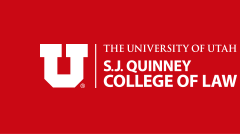Author ORCID Identifier
Document Type
Article
Publication Date
2022
Abstract
The Biden Administration’s efforts to expedite a transition to clean energy have prompted calls for permit reform. Clean energy relies heavily upon critical minerals and transitioning to a clean energy economy demands a global increase in mineral production. Some commentators suggest that environmental standards must be loosened in order to achieve efficiency. This premise offers short term gain in exchange for long-term pain. It also poses a false dilemma by failing to distinguish between productive and unproductive causes of delay in the permitting process. The permit process creates opportunities to eliminate, reduce, or mitigate risks. These opportunities may cause short-term delays in exchange for the long-term benefit of designing a better project or avoiding environmental catastrophes. The increased demand for minerals should not overshadow the productive purposes served by permitting.
At the same time, there are opportunities to improve permitting efficiency without compromising rigorous health and safety standards. This requires identifying and addressing unproductive causes of delay within the permit process. Analytical rigor does not appear to cause delay in the permitting process. Empirical evidence reveals that the majority of permitting decisions are made within a reasonable timeframe for the complexity of the project. Some decisions encounter excessive delays, but this occurs even where analytical rigor is not required. The disparity in decisionmaking times suggests that factors other than regulatory requirements contribute significantly to project delays. Causes of delay include inadequate agency budgets, a lack of qualified staff, staff turnover, delays receiving information from permit applicants, and compliance with other laws.
Based upon this information, three simple actions can be taken to expedite mine permit processing times without sacrificing analytical rigor. First, avoid delay caused by insufficient agency capacity. This can be achieved by increasing agency staff, stabilizing budgets, rebuilding expertise, and encouraging confident decisionmaking even where it results in litigation. Second, reduce delay by creating tools that make the legal structure, permitting requirements, and available information more transparent and publicly available. This can be achieved by creating a mine permitting hub with flow charts clarifying the permitting process and identifying permit authorities. Environmental checklists would help permit applicants submit high quality applications that do not require supplementation. Additionally, a geographically organized database of previous environmental studies would avoid encourage tiering and avoid unnecessarily repetitive studies. Third, use the NEPA process as a tool to avoid delay caused by uncoordinated inter-agency permitting requirements. These tools can promote efficiency without eliminating analytical rigor and without waiting for statutory or regulatory reforms. Implementing these recommendations could help the Biden Administration dispel the myth that permit reform requires loosening environmental standards or analytical rigor as we respond to the challenges of climate change.
Recommended Citation
Jamie Pleune, Playing the Long Game: Expediting Permitting Without Compromising Protection, 52 ELR 10893 (2022)
Included in
Environmental Law Commons, Natural Resources Law Commons, Oil, Gas, and Mineral Law Commons

